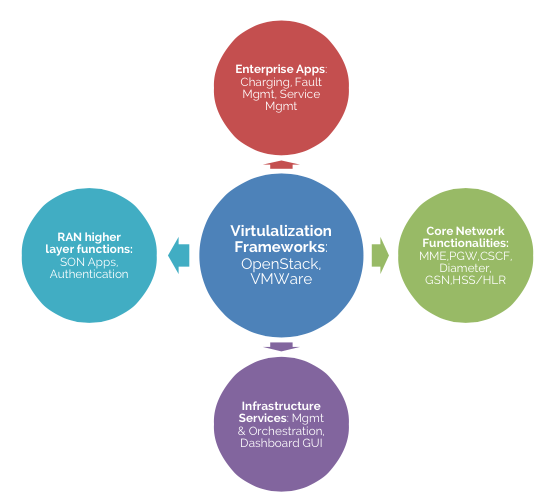Optimizing Service Agility Because of NFV – What to Virtualize
Network Functions Virtualization (NFV) lets you turn network functions into virtualized functions, thereby allowing you to run them on less-expensive server hardware rather than on high-cost network hardware infrastructure. There’s little doubt that you’ll see an increase in service agility because of NFV, but to make the most of it, you need to have a realistic picture of which services are easy to migrate and which ones take more time.
Service Agility is a Lofty Goal
The immediate benefits are obvious. Currently, network operators tell us that it can take between two and four weeks to provision new business network services if no new infrastructure is involved; if new infrastructure is involved, you’re looking at a minimum of several months.
Migrating to NFV is more than tossing out proprietary routers and trading them in for commodity servers, however. A clear migration path is essential. You’re looking at implementing hypervisors, virtual switches, carrier-grade operating systems, server chipsets that are NFV-enabled, and they all have to work together with the NFV Virtual Infrastructure Manager.
One Virtual Network Function at a Time
While leading operators may differ in their opinions as to which VNF is right to start with when implementing NFV, they do seem to agree on one thing: It is best to start with a single function.
The highest level of service agility through NFV is best achieved one step at a time. Choose a VNF and the NFV architecture that is required to support that single function. You’ll want to start with a function that has a strong business case for it, which is ripe for virtualization.
What functions are best
It might be that you’re nearing the end of the life cycle on a piece of existing equipment, or you’re implementing a new customer-facing service. These are two situations where NFV can be highly effective.
In addition, you need to think if your NFV will be a more distributed model or whether it will take place primarily in the data center. After that, you can start taking a look at individual functions and compare the gain they provide in service agility with their cost to implement.
Distributed NFV or Data Center NFV?
While there can be benefits of setting NFV up in a data center, this principle can also cause certain problems. NFV assumes a wide flexibility as to exactly where the various VNFs are located. If all of the virtualized capability is in the data center, it becomes less effective and you lose some service agility because of NFV.
Virtualized functions should be placed based on two criteria: where they are most effective and where they are least expensive. That could mean NFV is located in the data center, but it could also mean locating NFV in the network node or even on the customer premises.
Choosing What to Virtualize
Some network functions are easy to virtualize but don’t have a significant gain by doing so. Other functions have a much quicker and more efficient payoff. Let’s look at a few examples:
- Core routers and Ethernet switches: These functions don’t cost much to switch to NFV and provide only a small increase in service agility. Edge routers move up the scale a little from here, with a bigger gain in service agility.
- Packet and media gateways: These gateways tend to provide a significant gain in service agility for a low-to-moderate cost. Radio Access Networks also fall into this category.
- Media servers and CDN: This is the sweet spot. You’ll achieve high gain in automation with a medium expenditure. If you use either of these functions, they are a great place to start with implementing NFV.
- Network appliances: Network appliances are nearly as good as media servers in terms of the gains they make but cost a little bit more.
- Network apps: This category includes functions like IP Multimedia Subsystem (IBS), presence servers or telephony application servers. These types of services have a medium to large increase in cost as well as a medium to large increase in automation gain.
- OSS/BSS: Virtualization of OSS and BSS have higher costs while providing about the same amount of Virtualization benefit to service agility as edge routers. These should be among the last services that you choose to move to NFV.
- NFV/SDN control: While both SDN and NFV are necessary for a network environment that’s highly virtualized, the gain provided is moderate and comes at a high cost.
Ultimately, providing the highest increase in service agility because of NFV rises and falls on both what you choose to virtualize and how you choose to go about implementing it.

Product Engineering Services Customized software development services for diverse domains
Quality Assurance End-to-end quality assurance and testing services
Managed Services Achieve scalability, operational efficiency and business continuity
Technology Consulting & Architecture Leverage the extensive knowledge of our Domain Experts




